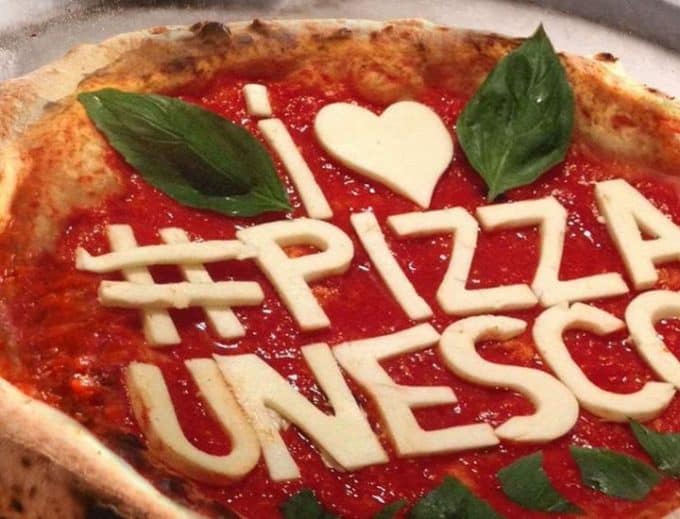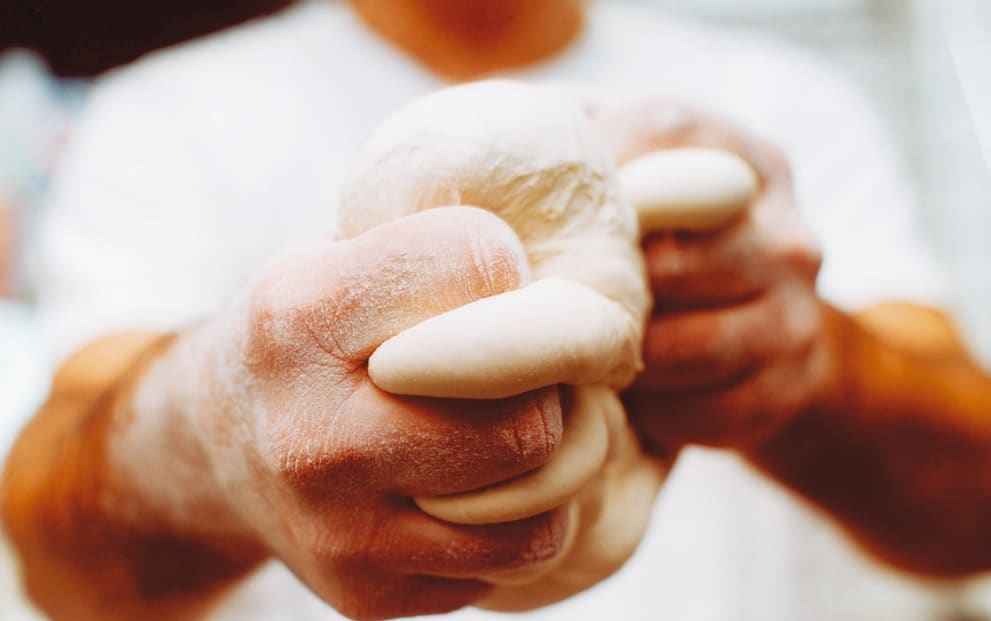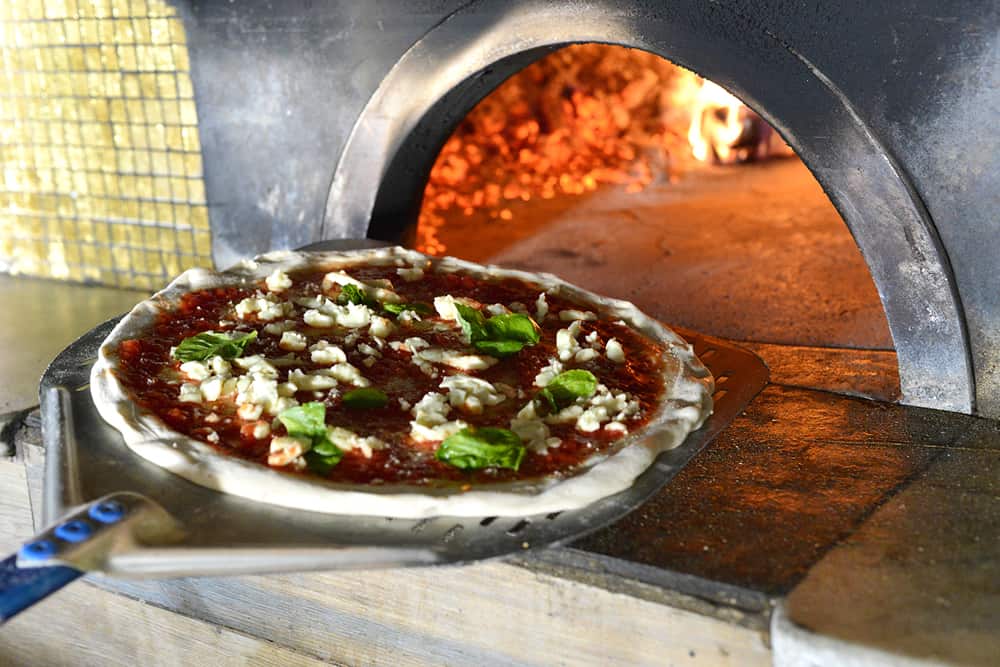The art of the Neapolitan ‘Pizzaiuolo’ (pizza makers) is a culinary practice comprising four different phases:
- The first phase: the shaping of dough balls (the so called ‘Staglio’)
- The second phase: spreading the dough (called ‘ammaccatura’). Pizzaiuolo forms the famous raised rim called ‘cornicione’ with a skillful motion for its extension (called ‘schiaffo’). In this phase, the real performing art that assumes a character of ability due to the master of Naples Pizzaiuoli
- The third phase: topping the dough with ingredients from the centre , with a spiraling and clockwise motion
- The fourth phase: baking in a wood-oven, with a rotating movement (‘half turn’)
The element originates in Naples, the capital of the Campania Region, where about 3,000 Pizzaiuoli now live and perform. Pizzaiuoli are a living link for the communities concerned. There are three primary categories of bearers – the Master Pizzaiuolo, the Pizzaiuolo and the baker – as well as the families in Naples who reproduce the art in their own homes. The element fosters social gatherings and intergenerational exchange, and assumes a character of the spectacular, with the Pizzaiuolo at the centre of their ‘bottega’ sharing their art. Every year, the Association of Neapolitan Pizzaiuoli organizes courses focused on the history, instruments and techniques of the art in order to continue to ensure its viability. Technical know-how is also guaranteed in Naples by specific academies, and apprentices can learn the art in their family homes. However, knowledge and skills are primarily transmitted in the ‘bottega’, where young apprentices observe masters at work, learning all the key phases and elements of the craft.




The know-how of pizza makers has been rewarded
After 8 years of international negotiations, the Unesco Government Committee voted unanimously for Italy’s candidacy, recognizing the art of handling and preparing Neapolitan pizza as unique in the world.
This is what is stated in the final Unesco decision:
“The culinary know-how linked to the production of pizza, which includes gestures, songs, visual expressions, local jargon, the ability to handle pizza dough, perform and share is an indisputable cultural heritage. Pizza makers and their guests are engaged in a social ritual, whose counter and oven act as a “stage” during the pizza making process. This occurs in a convivial atmosphere involving constant exchanges with guests. Starting from the poor neighbourhoods of Naples, the culinary tradition is deeply rooted in the daily life of the community. For many young practitioners, becoming Pizzaiolo is also a way to avoid social marginalization.”
This is the 58th Good protected in Italy, it was obtained following the long work of the Ministry of Agricultural, Food and Forestry Policies, which, supported by the pizza makers’ associations, began in 2009 to draft the dossier to be submitted for the candidacy.
A great achievement for the city of Naples and for its traditions that, due to their fascination and genuineness, become important all over the world.
The pizza in four phases

The first phase: the shaping of dough balls (the so called ‘Staglio’). With the aid of a spatula, the mixture is cut into strips from which pieces are broken off and then shaped into balls. The formation of the balls must be done exclusively by hand. This technique, known as ‘staglio a mano’ whereby the dough is made into small balls, ‘panetti’, is reminiscent of the technique used in the preparation of mozzarella – ‘mozzatura’ also done by hand.

The second phase: spreading the dough (called ‘ammaccatura’). Pizzaiuolo forms the famous raised rim called ‘cornicione’ with a skillful motion for its extension (called ‘schiaffo’). In this phase, the real performing art that assumes a character of ability due to the master of Naples Pizzaiuoli

The third phase: topping the dough with ingredients from the centre , with a spiraling and clockwise motion.

The fourth phase: baking in a wood-oven, with a rotating movement (‘half turn’)


